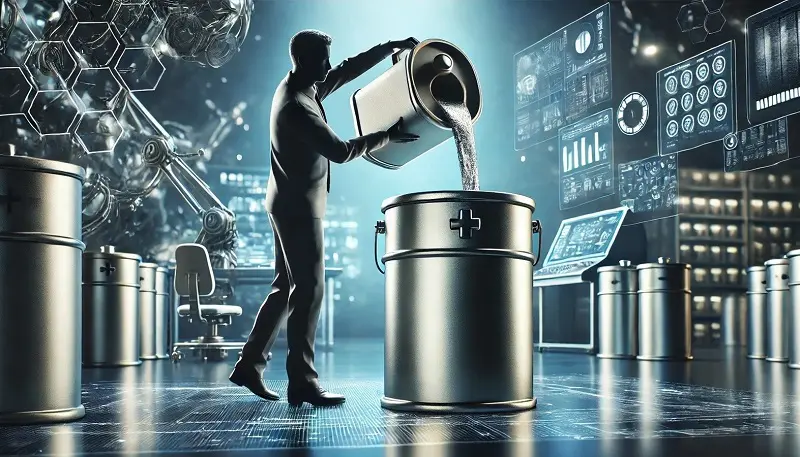A team of researchers at Stanford University are aiming to improve options for renewable energy storage by working on new technology to enable the conversion and long-term storage of electrical energy in a ‘liquid battery’.
The Issue
People in California as a state (plus Stanford University and the researchers based there) are looking to transition to renewable fuel, although it is facing some challenges in doing so. For example, solar power drops at night and declines in winter. Furthermore, wind power ebbs and flows and is unreliable. As a result, California has to depend heavily on natural gas to smooth out the highs and lows of renewable power. This means there’s now a strong argument to suggest that new technologies that can store more power for the electric grid are needed.
Currently Lithium-Ion
As highlighted by Robert Waymouth, the Robert Eckles Swain Professor in Chemistry in the School of Humanities and Sciences, “The electric grid uses energy at the same rate that you generate it, and if you’re not using it at that time, and you can’t store it, you must throw it away.”
However, in California, rather than throw it away, batteries are already used to store electricity for the grid using lithium-ion technologies, e.g. at the Moss Landing Energy Storage Facility. However, due to the need for energy storage at scale, researchers (such as those at Stanford) are searching for systems that can supplement those technologies.
A Liquid Battery
One such technology being worked on by Waymouth’s Stanford research team is using liquid organic hydrogen carriers (LOHCs) for renewable energy storage.
LOHCs can store and release hydrogen using catalysts and elevated temperatures and, in the future, may be able to function as “liquid batteries,” storing energy and efficiently returning it as usable fuel or electricity when needed.
Isopropanol
The Stanford researchers have been experimenting with using Isopropanol (rubbing alcohol) and acetone as ingredients in hydrogen energy storage and release systems. For example, Isopropanol (a high-density liquid form of hydrogen) could be stored or transported through existing infrastructure until it’s needed for usage as a fuel in a fuel cell or to release the hydrogen, without emitting carbon dioxide.
For example, as Waymouth says: “When you have excess energy, and there’s no demand for it on the grid, you store it as isopropanol. When you need the energy, you can return it as electricity.”
Catalyst System Developed To Help
One challenge in doing this until now has been finding a way to make isopropanol directly from protons and electrons without producing hydrogen gas.
However, Daniel Marron, lead author of the study has, developed a catalyst system that can combine two protons and two electrons with acetone to generate the LOHC isopropanol selectively, without generating hydrogen gas (using iridium as the catalyst).
One key finding in developing the catalyst system was the success of using the relatively inexpensive Cobaltocene, a chemical compound of cobalt, as a co-catalyst in this reaction. The addition of cobaltocene solved the problem by directly delivering protons and electrons to the iridium catalyst rather than liberating hydrogen gas.
More Abundant, Cheaper Catalysts May Be Better
The hope is now that this greater understanding of the properties of cobaltocene could help scientists develop other catalysts to make the LOHC systems more affordable and scalable. For example, this could mean using more abundant, non-precious earth metal catalysts, such as iron.
Used For What?
Upscaled LOHC systems could be used to improve energy storage for industry and energy sectors or for individual solar or wind farms.
What Does This Mean For Your Organisation?
The advancements in liquid battery technology, particularly the usage of Liquid Organic Hydrogen Carriers (LOHCs), represent a significant opportunity for organisations across various sectors. As the push for renewable energy intensifies, the ability to store energy efficiently and on a large scale becomes increasingly critical. For industries reliant on consistent energy supply, this new technology could provide a reliable buffer against the intermittent nature of renewable sources like solar and wind. The potential to store excess energy as isopropanol, for instance, offers a versatile and scalable solution that could reduce dependence on fossil fuels and enhance energy security.
For organisations in the energy sector, especially those managing solar or wind farms, the development of LOHC systems could be a game-changer. These systems may allow for the capture and storage of surplus energy during periods of low demand, which can then be reintroduced into the grid when needed, thus optimising energy production, and reducing waste. Also, the move towards using more abundant, non-precious metal catalysts in these systems could lower costs and make this technology more accessible, opening new avenues for innovation and investment.


